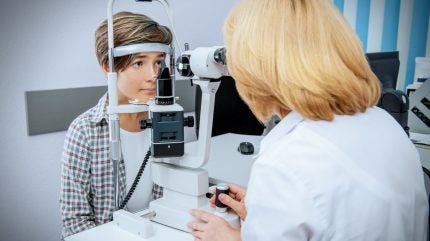
Belite Bio has submitted an application to the Japanese Pharmaceuticals and Medical Devices Agency (PMDA) to begin a clinical trial of Tinlarebant for treating adolescent Stargardt disease (STGD1).
Known as DRAGON II, this trial comprises a Phase Ib open-label study and a Phase II/III global study.
The Phase Ib study is specifically designed to assess tinlarebant’s pharmacokinetics and pharmacodynamics in Japanese adolescent STGD1 subjects.
The subsequent double-masked, multicentre, placebo-controlled, randomised Phase II/III trial will analyse the safety efficacy, and tolerability of the therapy in these subjects.
In the Phase II/III segment, nearly 60 participants aged between 12 and 20 years, including around ten Japanese participants, will take part.
See Also:
These subjects will be randomised into a 1:1 ratio to receive either Tinlarebant or a placebo.
How well do you really know your competitors?
Access the most comprehensive Company Profiles on the market, powered by GlobalData. Save hours of research. Gain competitive edge.

Thank you!
Your download email will arrive shortly
Not ready to buy yet? Download a free sample
We are confident about the unique quality of our Company Profiles. However, we want you to make the most beneficial decision for your business, so we offer a free sample that you can download by submitting the below form
By GlobalDataThe data collected from Japanese subjects will be crucial for the submission of new drug applications (NDA) in Japan in the future.
An oral treatment, Tinlarebant can lower the build-up of vitamin A-based toxins (bisretinoids) that not only cause retinal disease in STGD1 but also contribute to the progression of geographic atrophy (GA), or advanced Dry age-related macular degeneration (AMD).
The oral therapy functions by modulating serum retinol-binding protein 4 (RBP4) levels, the primary carrier protein for retinol transport from the liver to the eye, thereby reducing the formation of bisretinoids.
Tinlarebant received fast track and rare pediatric disease designations in the US, as well as orphan drug designation in the US, Europe, and Japan to treat STGD1.
According to the findings from a 24-month Phase II trial in adolescent STGD1 patients, tinlarebant-treated subjects had a sustained lower atrophic lesion growth versus ProgStar participants possessing similar baseline characteristics.
Furthermore, 42% of Tinlarebant-treated subjects did not have atrophic retinal lesions during the treatment duration.
Currently, subject enrolment in a global Phase III DRAGON trial of Tinlarebant in adolescent STGD1 subjects has concluded with 104 participants across 11 countries.
Interim data from the trial is anticipated in the fourth quarter of this year.







